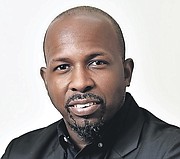Sustainability in this day and age refers to a company’s ability to consistently build capacity in its employees, processes and operations.
Capacity-building is defined as the process of developing and strengthening the skills, instincts, abilities, processes and resources that companies and communities need to survive, adapt and thrive in a fast-changing world. Capacity building is essentially about working on your company's ability to do more internally, such as speeding up production or improving your systems and processes.
Today’s column focuses attention on tips for micro, small and medium-sized (MSME) businesses interested in increasing efficiency and starting the journey of creating a capacity building model. Here are six thoughts on this topic:
Identify organisational goals: Very little can happen in terms of forward movement until the company's goals and objectives are clearly defined and communicated throughout the organisation. Ensuring the SMART goals, which outline details on what, who, why, where, when and how every thing will be done in the organisation, are aligned with the company's ethos is crucial for success and capacity building.
Conduct a skills gap analysis: Knowing and understanding where you are weakest is both a humbling and necessary action in building capacity. The old adage says we are as strong as our weakest link. Knowing where to place additional resources, training and support is vital to success and capacity building.
Design training and development programmes. Creating a learning culture where employees see themselves as lifelong learners is key to building capacity. No amount of dependency on technology can take the place of a competent and knowledgeable workforce.
Provide learning resources and support: From solid orientation programmes to a company library and tuition reimbursement, every bit of support you can give to employees in their pursuit of new information is crucial. Create a culture of information sharing with your technology and encourage all employees to see their team members and resources.
Encourage skills application and feedback. Learning is most effective when it is applied in practical situations. Provide your employees with opportunities to apply their newly-acquired skills in real work scenarios. Encourage feedback and reflection on their performance, including feedback from leadership, and provide constructive guidance for additional improvement.
Establish measurement and evaluation metrics. Develop metrics and evaluation criteria to assess the effectiveness of your capability building model. Track the progress of your individual employees and the overall impact on organisational performance. This will allow you to effectively identify areas of transformation and areas that need further improvement.
* NB: Ian R Ferguson is a talent management and organisational development consultant, having completed graduate studies with regional and international universities. He has served organisations, both locally and globally, providing relevant solutions to their business growth and development issues. He may be contacted at tcconsultants@ coralwave.com.





Comments
Use the comment form below to begin a discussion about this content.
Sign in to comment
OpenID